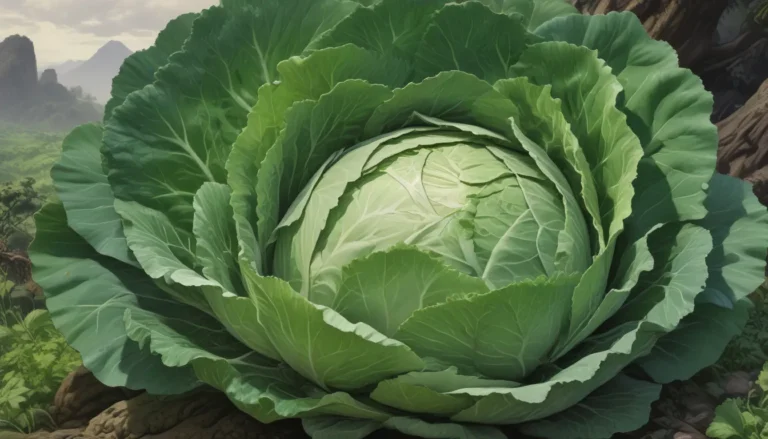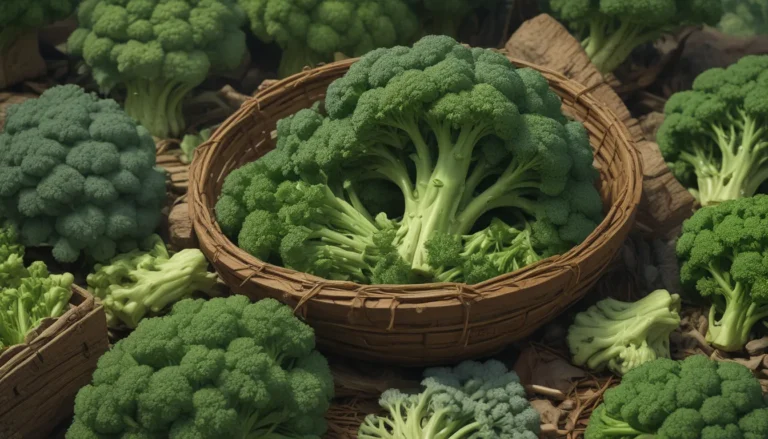Complete Guide on How to Control Cabbage Loopers

Are pesky cabbage loopers wreaking havoc on your vegetable garden? These green inchworms, scientifically known as Trichoplusia ni, have a particular affinity for cole crops such as cabbages, kale, and broccoli. However, they also pose a threat to a wide range of other crops, including tomatoes, radishes, and lettuce.
These voracious caterpillars can make a meal out of your garden in no time, leaving nothing but holes and destruction in their wake. But fear not, controlling cabbage loopers is entirely feasible with the right strategies in place.
In this comprehensive and detailed guide, we will delve into the various aspects of identifying, managing, and eradicating cabbage loopers from your garden. From understanding their life cycle to implementing cultural controls, biological options, and organic insecticides, we have got you covered!
Let’s dive into the world of cabbage loopers and learn how to effectively deal with these notorious pests.
Identification, Biology, and Life Cycle
Identification
The cabbage looper is the larval stage of the Trichoplusia ni moth, commonly found in the Noctuidae family. While the adult moth may seem unassuming, with a grayish-brown coloration and a single silver spot on its wings, the real trouble starts when they lay their eggs.
These moths lay light green or yellow spherical eggs on the undersides of leaves, particularly favoring Brassicaceae family plants. The hatched larvae are white initially, turning green as they grow, eventually resembling green inchworms with distinctive white stripes on each side of their bodies.
Cabbage loopers get their name from the unique looping motion they exhibit while moving, making them easily distinguishable from other caterpillar species. As they feed on your crops, they can cause significant damage, devouring leaves and burrowing into cabbage or broccoli heads.
Life Cycle
The life cycle of cabbage loopers begins with moths laying eggs on foliage, which hatch into larvae in two to seven days. The larvae then grow over a period of roughly 20 days, during which they can consume three times their body weight per day.
After reaching maturity, the larvae pupate, forming cocoons on the underside of leaves or in plant debris. Adult moths emerge after four to 14 days, completing the cycle and continuing the infestation.
Distribution and Management
Distribution
Cabbage loopers are prevalent throughout the United States, with warmer climates supporting their overwintering habits. These pests can complete multiple life cycles each year, with warmer temperatures accelerating their reproductive cycles.
Managing Cabbage Loopers
To effectively manage cabbage loopers in your garden and protect your precious crops, you can employ a variety of strategies:
Cultural Controls
- Use floating row covers to prevent moths from laying eggs on your plants early in the season.
- Encourage natural predators such as birds and beneficial insects to keep cabbage loopers in check.
- Clear out plant debris regularly to eliminate overwintering sites for pests.
Regularly inspect your plants for eggs and larvae, manually removing them if detected. Carefully choose transplants from nurseries to avoid introducing the pests unknowingly. Utilize food-grade diatomaceous earth as a natural control method for minor infestations.
Natural Enemies
Beneficial predatory wasps, such as Trichogramma spp., parasitize cabbage looper eggs, halting their development. Consider releasing live parasitic wasps into your garden to combat these pests effectively. Green lacewings are another useful predator that feeds on cabbage looper eggs, along with other harmful insects like aphids and thrips.
Biological Control
Biological methods involving Bacillus thuringiensis kurstaki (Btk) can target cabbage loopers without harming beneficial insects. Btk releases a toxin that paralyzes the digestive system of the larvae, effectively controlling their population. Apply Btk as a spray to treat the entire plant, ensuring comprehensive protection.
Organic Insecticides
Organic insecticides like pyrethrin-based sprays and spinosad offer effective control options for cabbage loopers. However, be cautious as these products can impact beneficial insects like honeybees and pollinators. Always follow application guidelines and consider the potential impact on non-target species.
Chemical Pesticides
As a last resort, chemical insecticides containing carbaryl or cyfluthrin can manage severe cabbage looper infestations. These products should be used judiciously, following manufacturer instructions to minimize environmental impact.
Conclusion
Ending the reign of cabbage loopers in your garden requires a multi-faceted approach involving cultural practices, natural predators, biological controls, organic insecticides, and chemical treatments if necessary. By understanding the life cycle and behavior of these pests, you can effectively combat their destructive tendencies and safeguard your vegetable crops.
Next time you spot those loopy inchworms munching on your greens, arm yourself with the knowledge and strategies outlined in this comprehensive guide. Take back control of your garden and bid farewell to cabbage loopers once and for all!
Have you encountered cabbage loopers in your garden? Share your experiences and tips in the comments below to help fellow gardeners tackle this persistent pest.
Remember, a healthy garden is a happy garden, free from the hungry caterpillars of the cabbage looper!
And for further insights on pest management and crop protection, explore our other guides:
- How to Eradicate Cabbage Worms on Cole Crops and Crucifers
- Getting a Grip on Flea Beetles
- How to Keep Slugs Off Cabbage and Other Cole Crops
Let’s banish those loopers and cultivate a thriving garden together!





